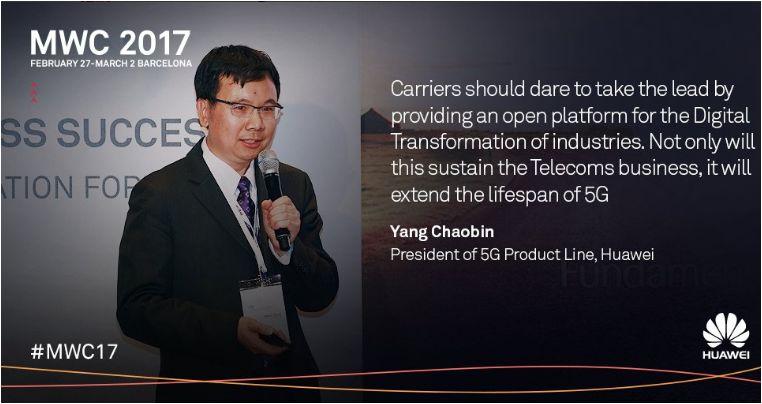 Telecom equipment and software maker Huawei has released the world’s first 5G core solution for commercial use case.
Telecom equipment and software maker Huawei has released the world’s first 5G core solution for commercial use case.
Huawei said Service-Oriented Core 2.0 (SOC 2.0), released at the MWC, will show the commercial 5G capabilities of the solution and enable all access to 5G networks and all services in 5G. It will provide connectivity for a multitude of terminals from various industries, and on-demand services for all vertical industries.
ALSO READ: Live news from Mobile World Congress 2017
SOC 2.0 will assist telecom operators to enable all access and all services and obtain 5G commercial success through driving the transformation of telecom networks in the following ways:
Through C/U separation, telecom operators can deploy network user planes to the network edge according to the service requirements.
It is necessary to decouple network elements according to their functions and to form independent and modularized functions. Telecom operators can organize these functions in the unified architecture according to the service requirements. Since multiple access modes and service requirements are agilely supported, telecoms can update every function to quickly meet new service requirements.
According to the service development and progress in technologies and standards, SOC will help operators to gradually build a 5G core network in three stages.
In the first stage, reconstruct the infrastructure with cloud and SDN technology, and build a DC-centered network cloud platform.
In the second stage, deploy VNFs based on the cloud architecture to prepare for the smooth evolution in the next stage. The key technologies include C/U separation, cross-DC deployment, stateless design and more.
In the last stage, deploy a standardized 5G core network on the cloud-based network architecture to support 5G services.
5G for automated driving
Meanwhile, Huawei and DLR have tested 5G for cooperative automated driving in Munich. The results show the practical applicability of 5G V2X to achieve low-latency connection between vehicles for collision avoidance. Currently, Huawei and DLR investigate the application of 5G V2X (Vehicle to Everything) for more complex cooperative maneuvers, starting with 5G-enhanced platooning.
Several trials, where a critical traffic scenario was simulated have been performed in December 2016 on a test track in Munich (Germany). Both, cellular connection via a 5G base station (V2N) and direct communication (V2V) between cars have been tested extensively.





